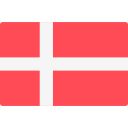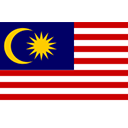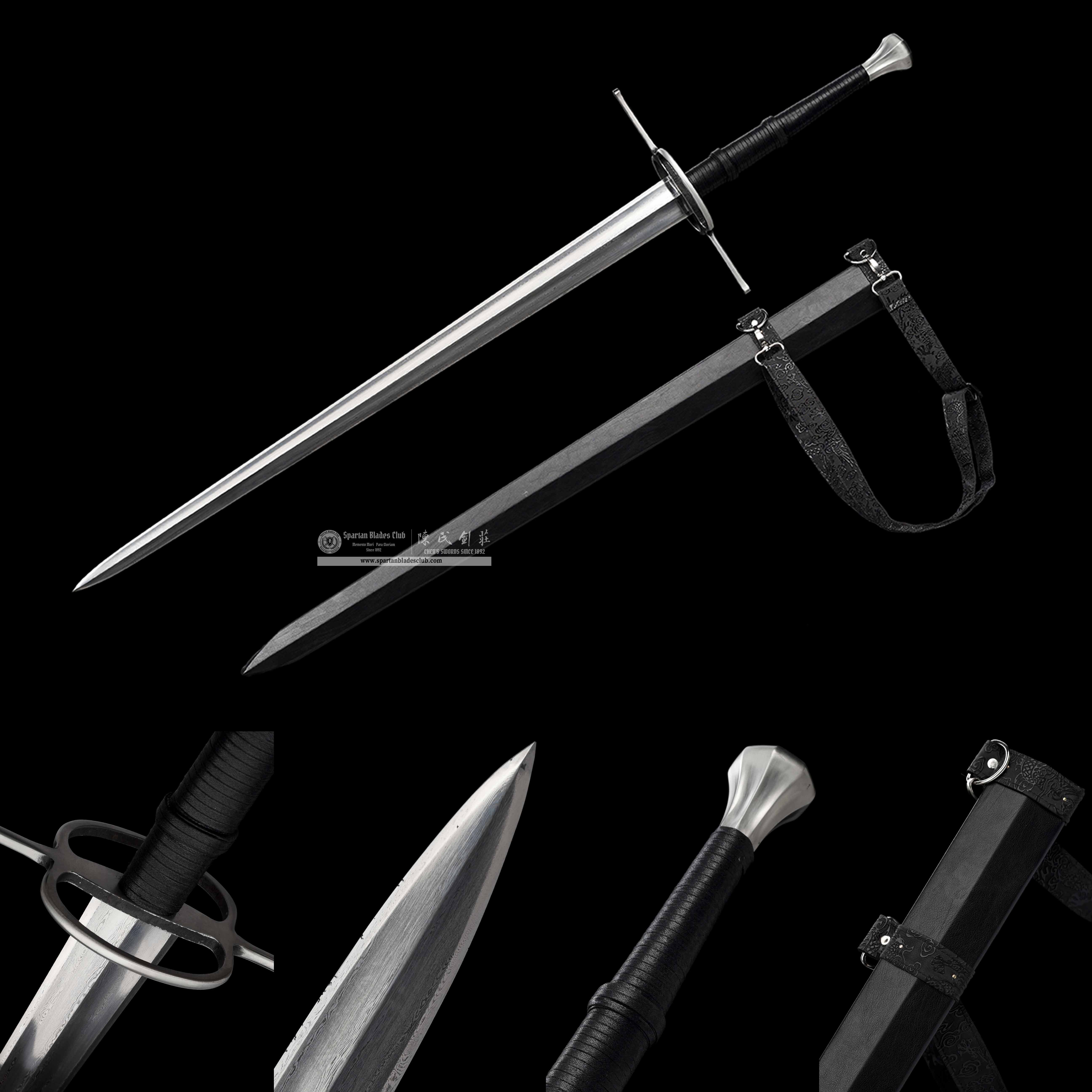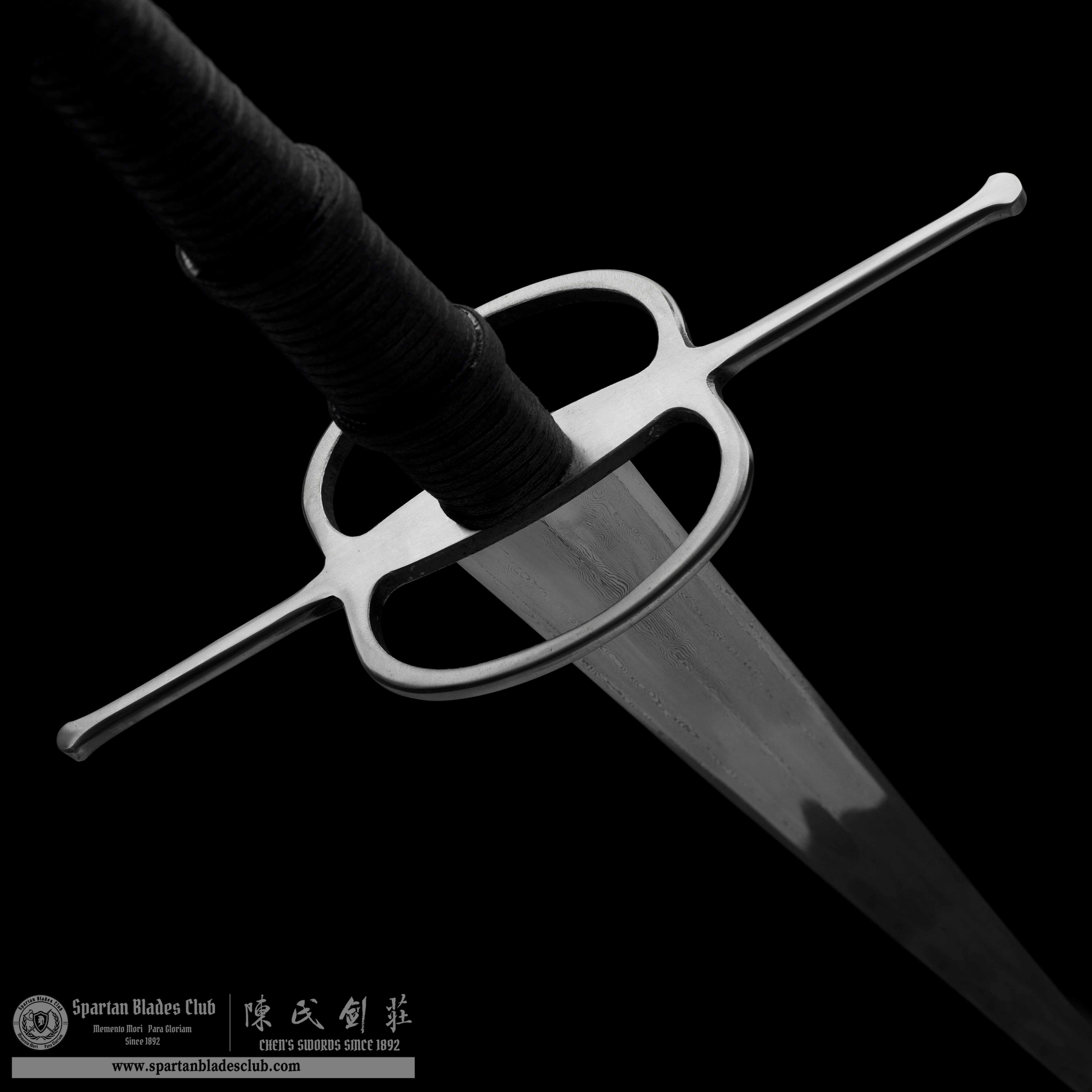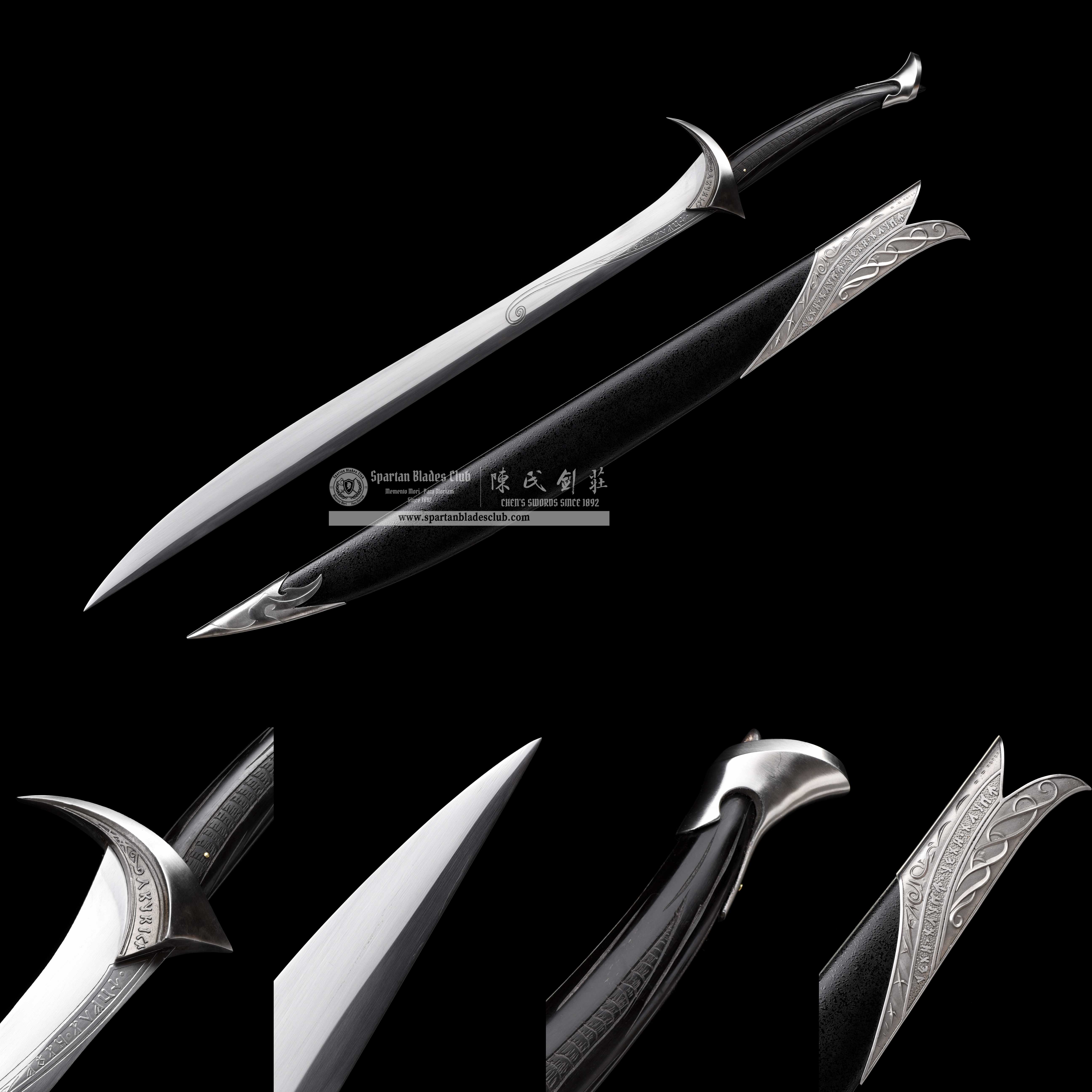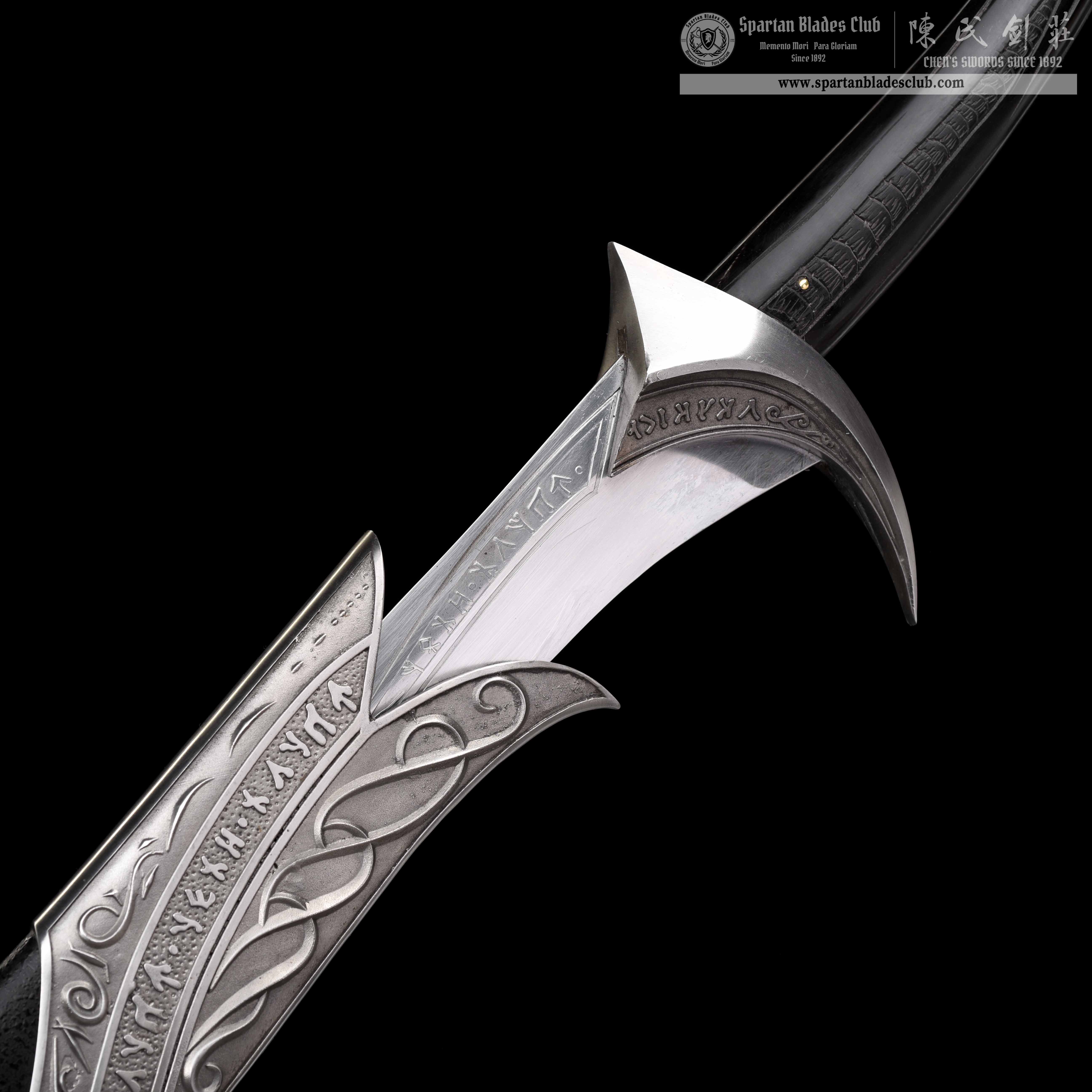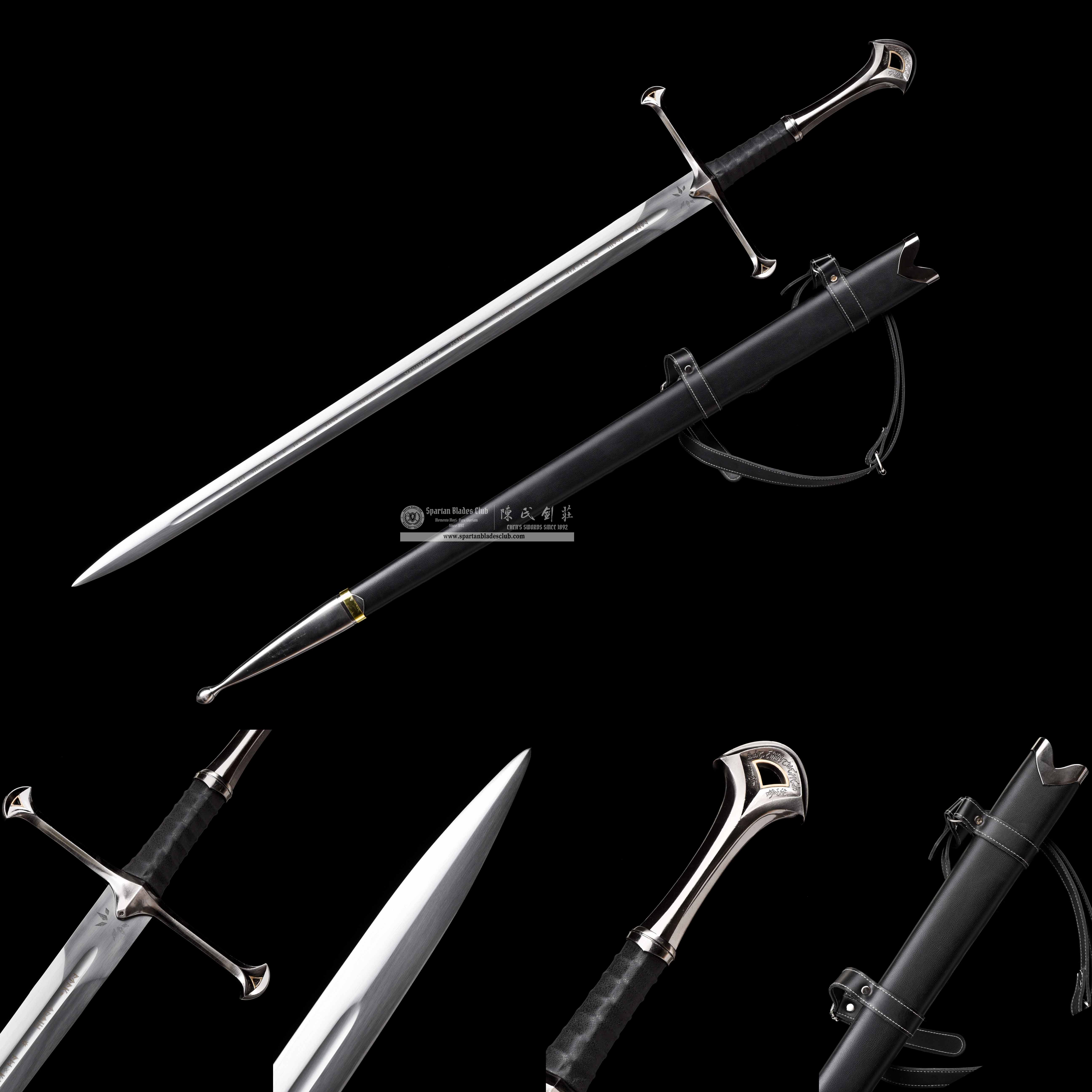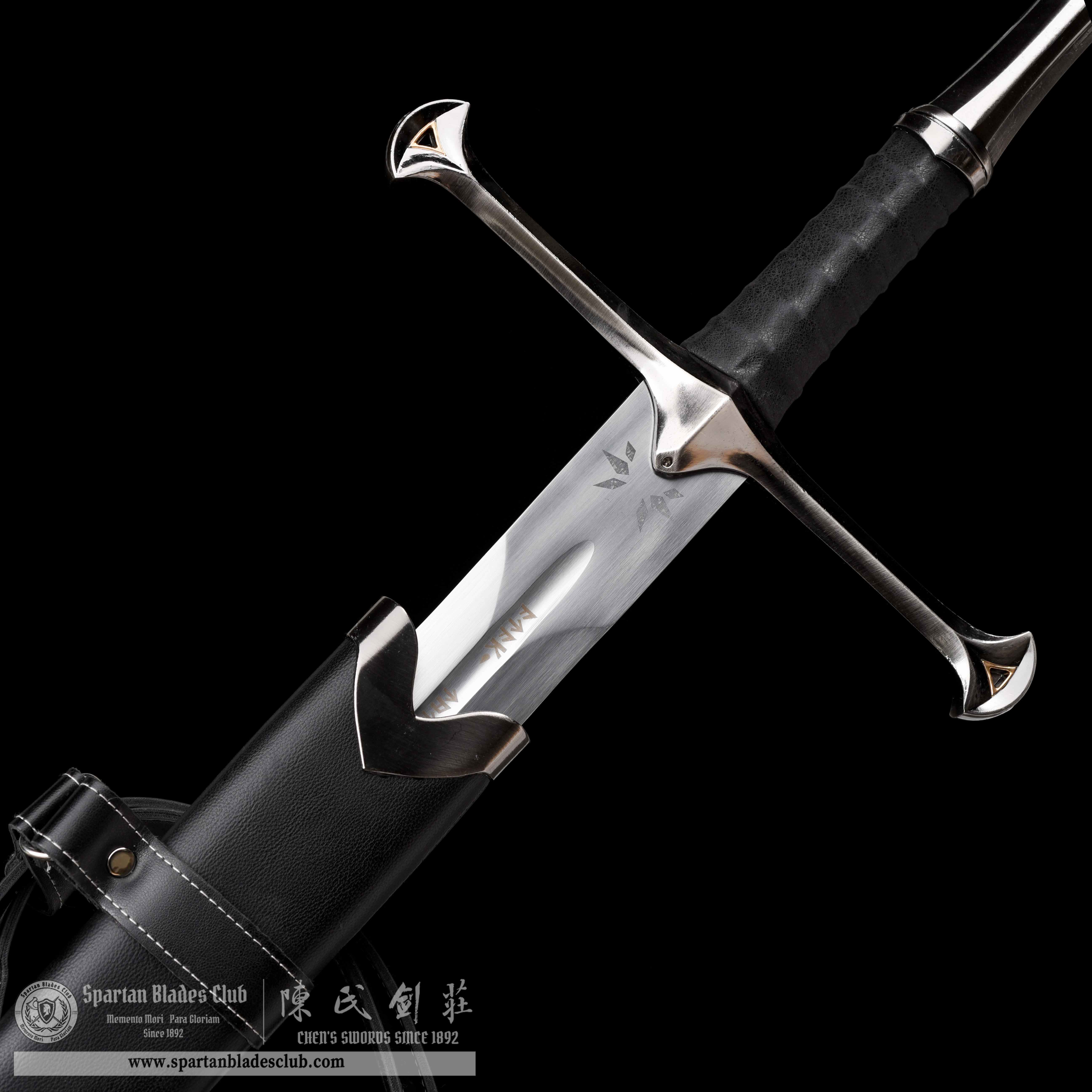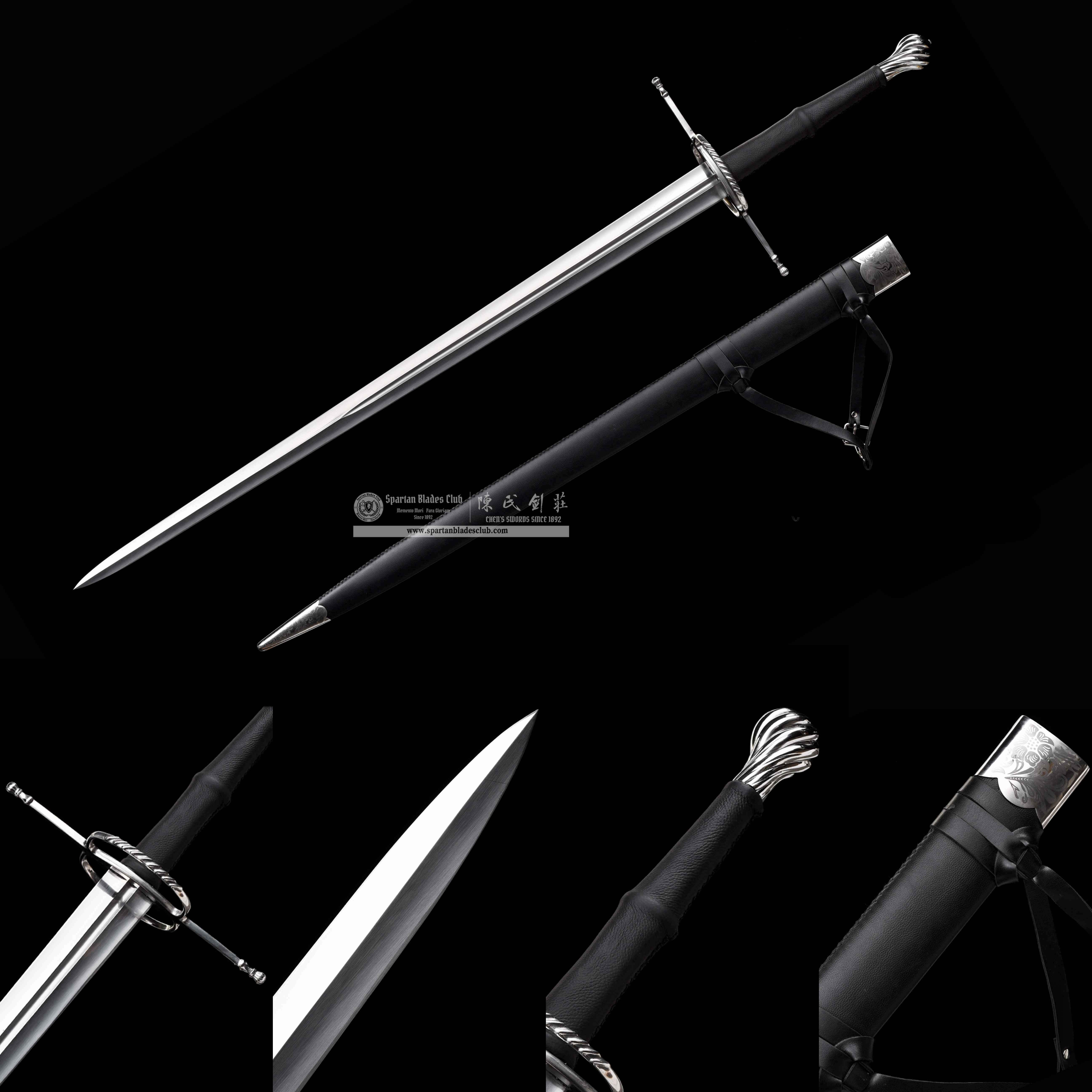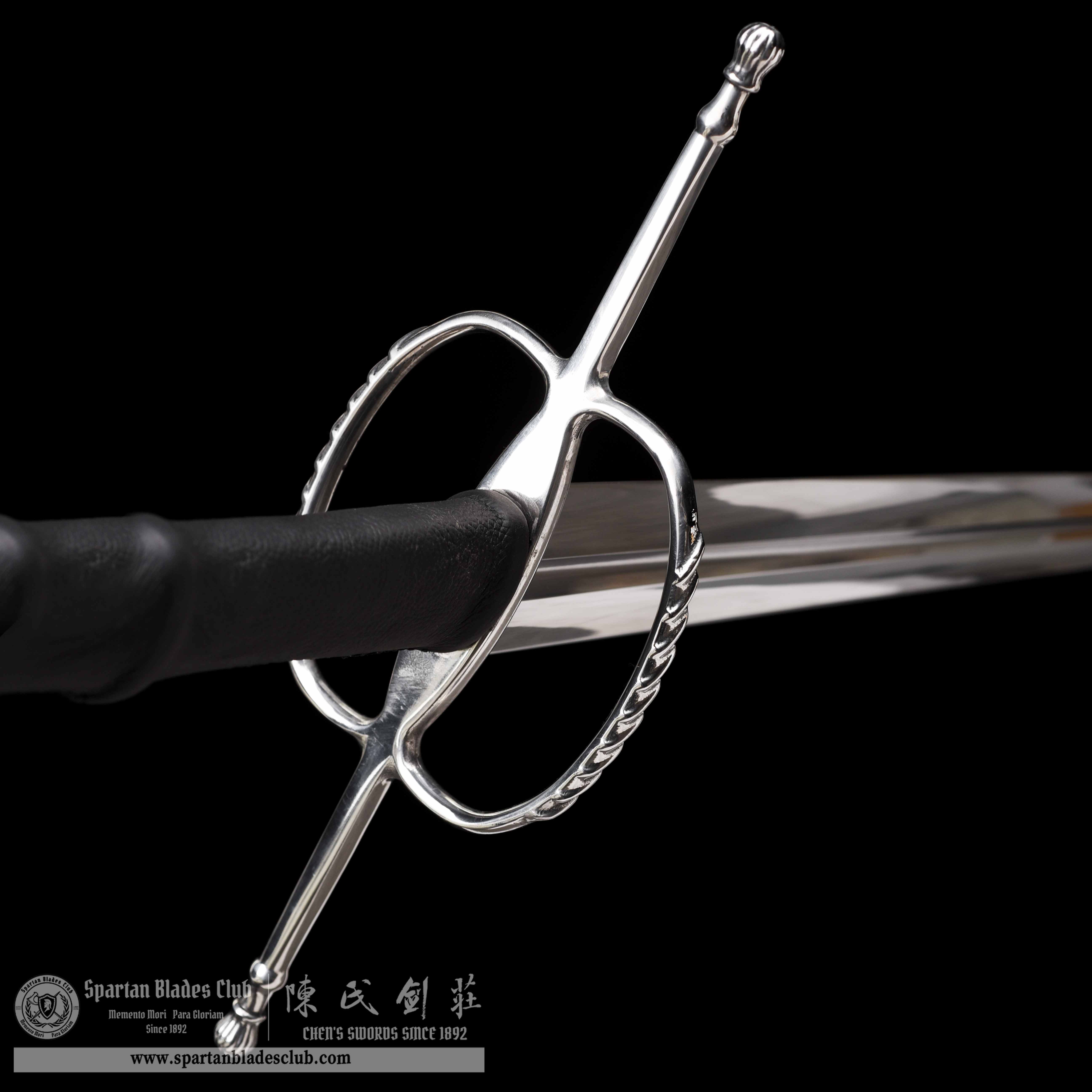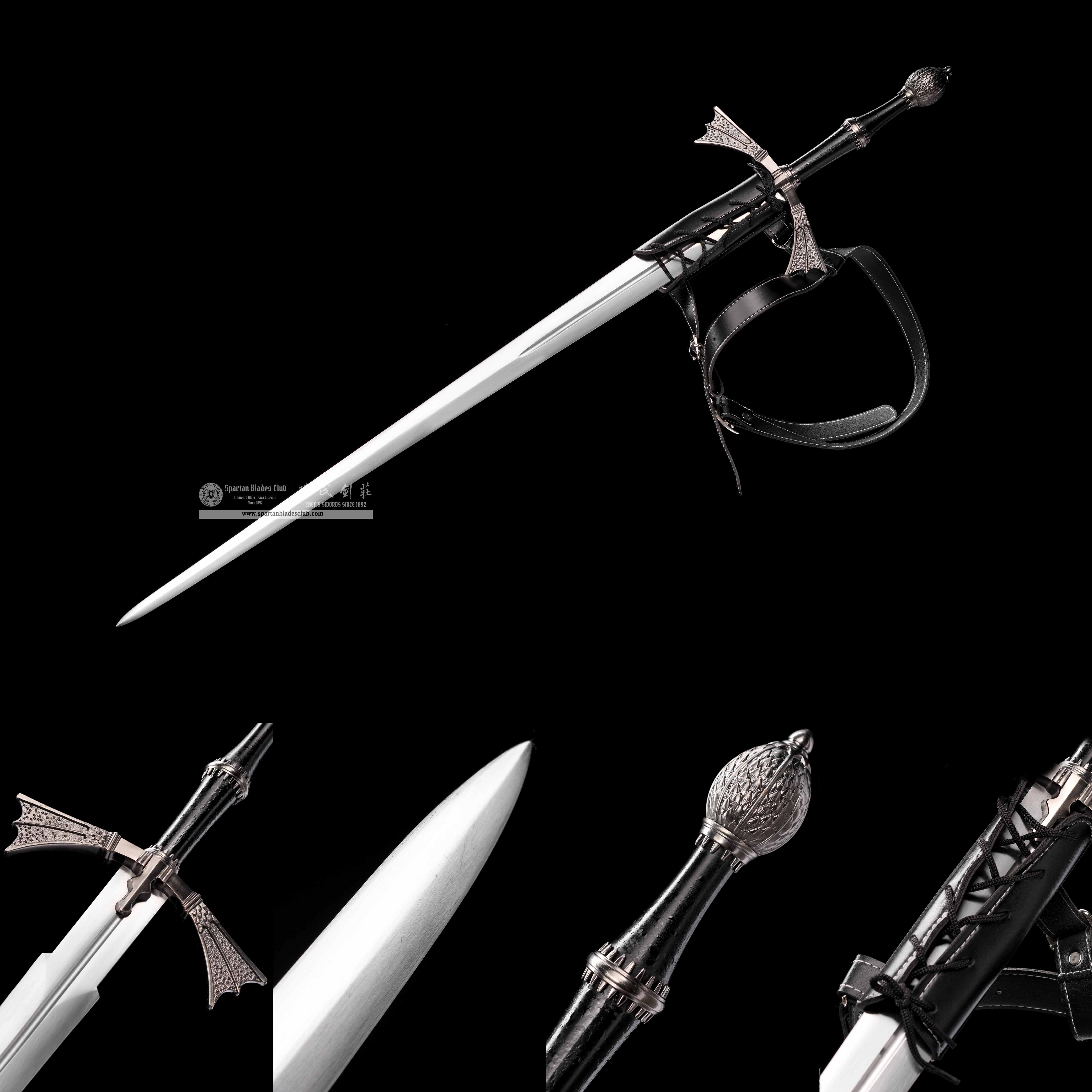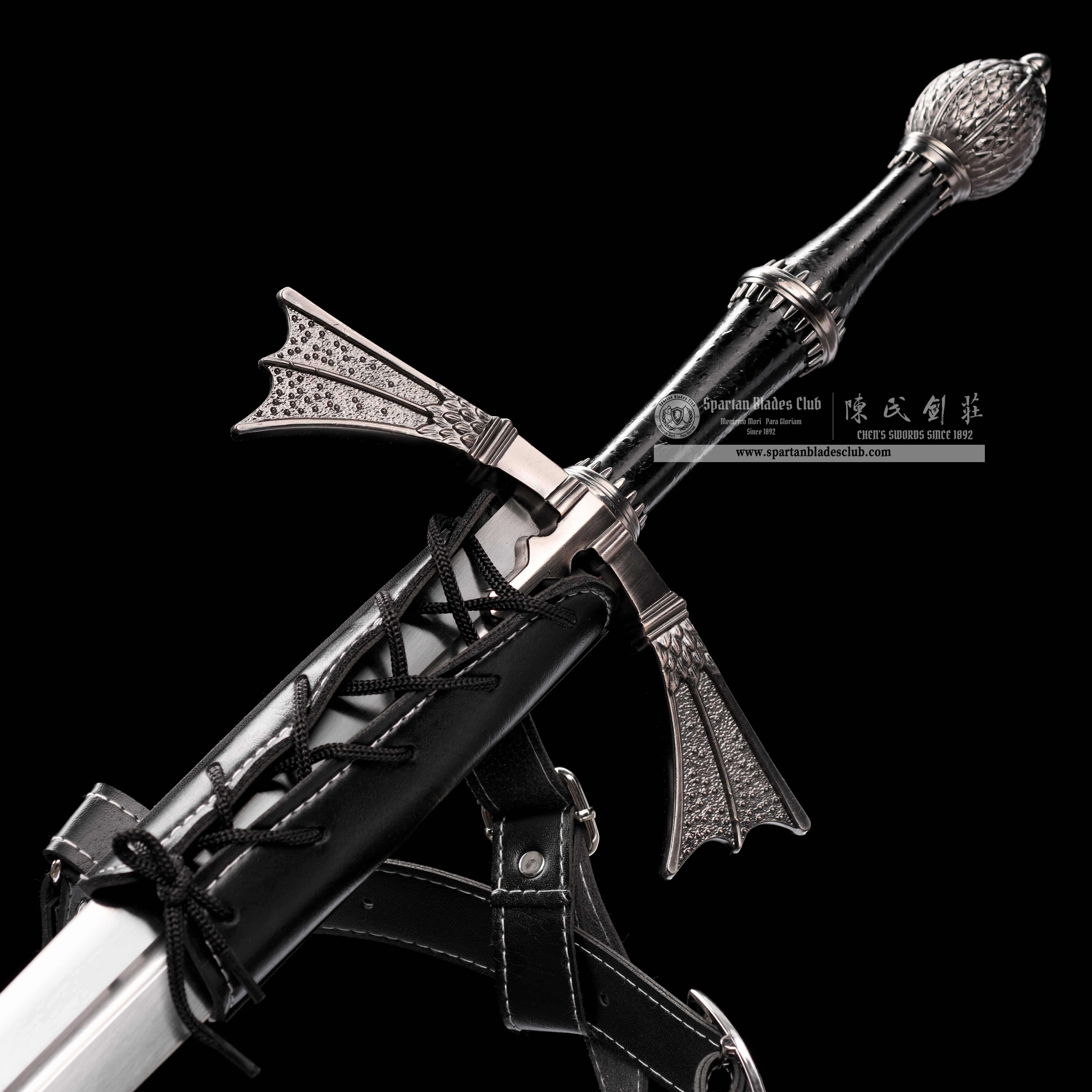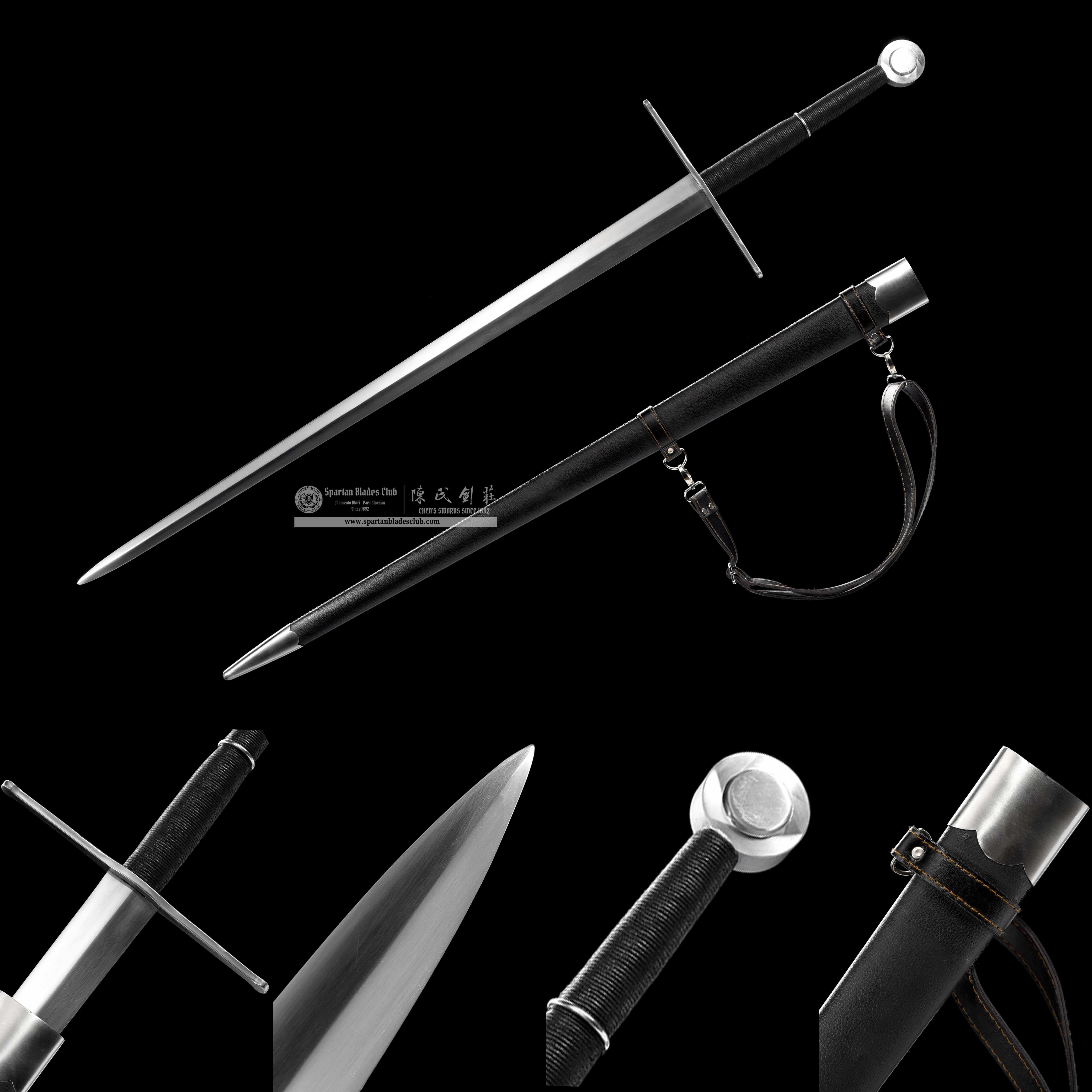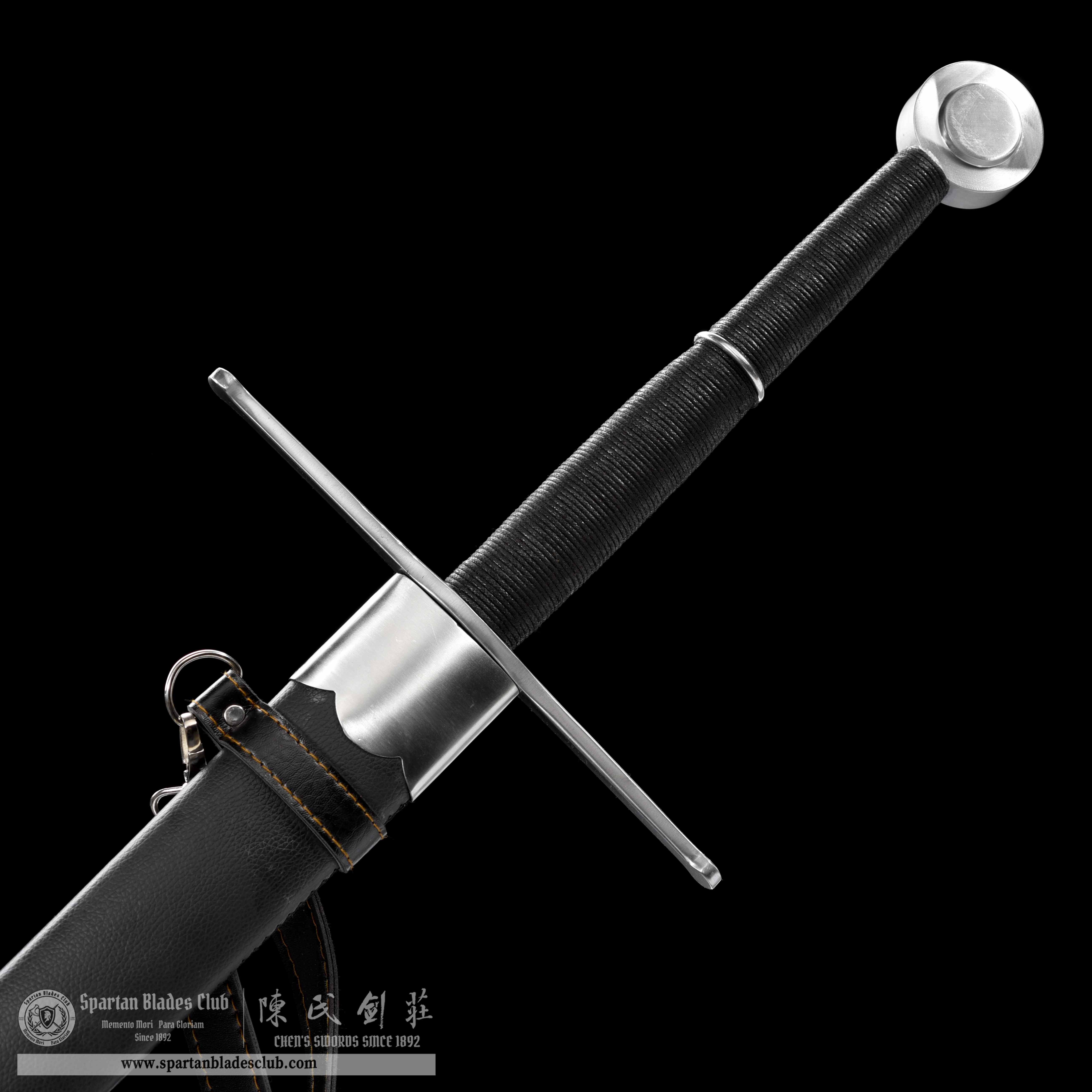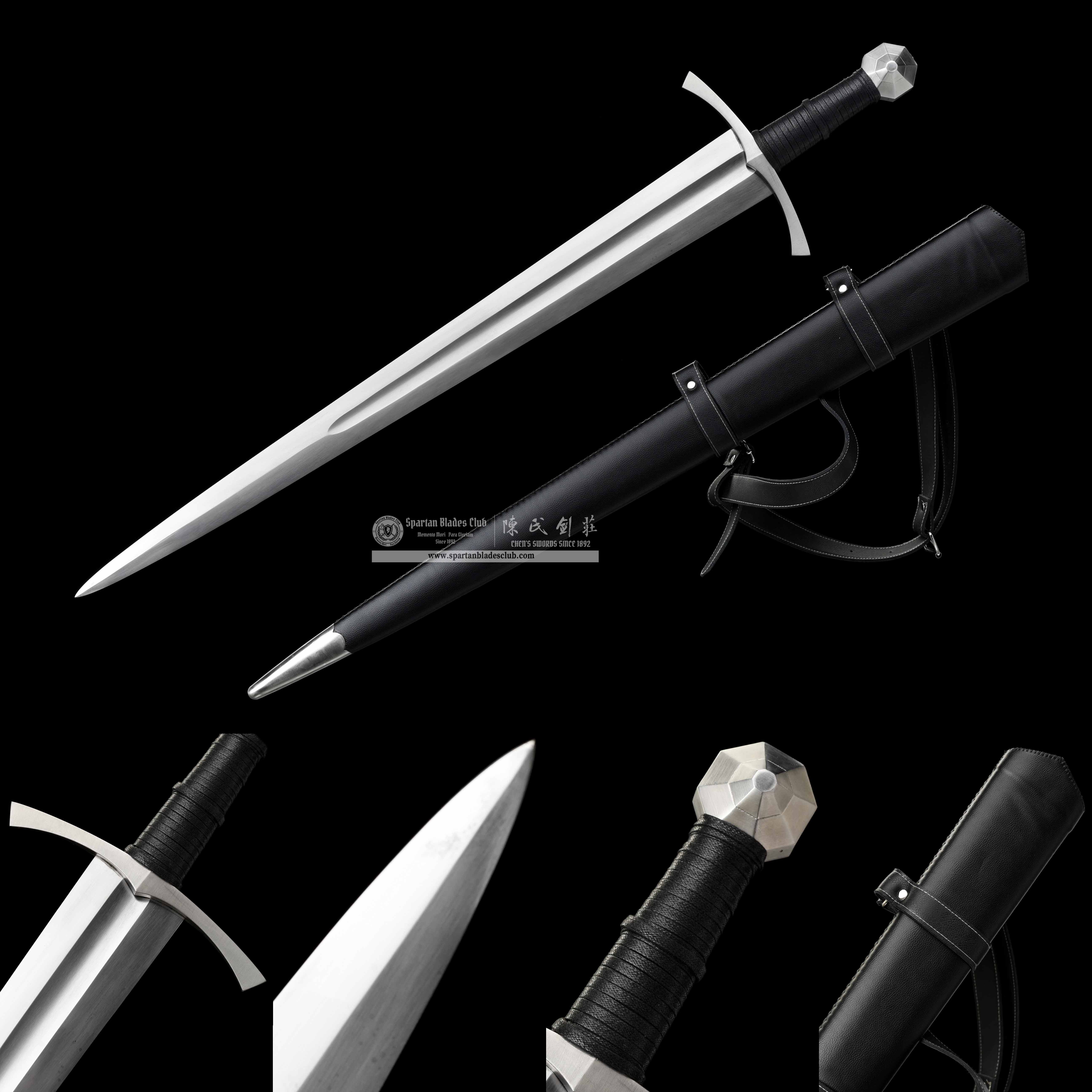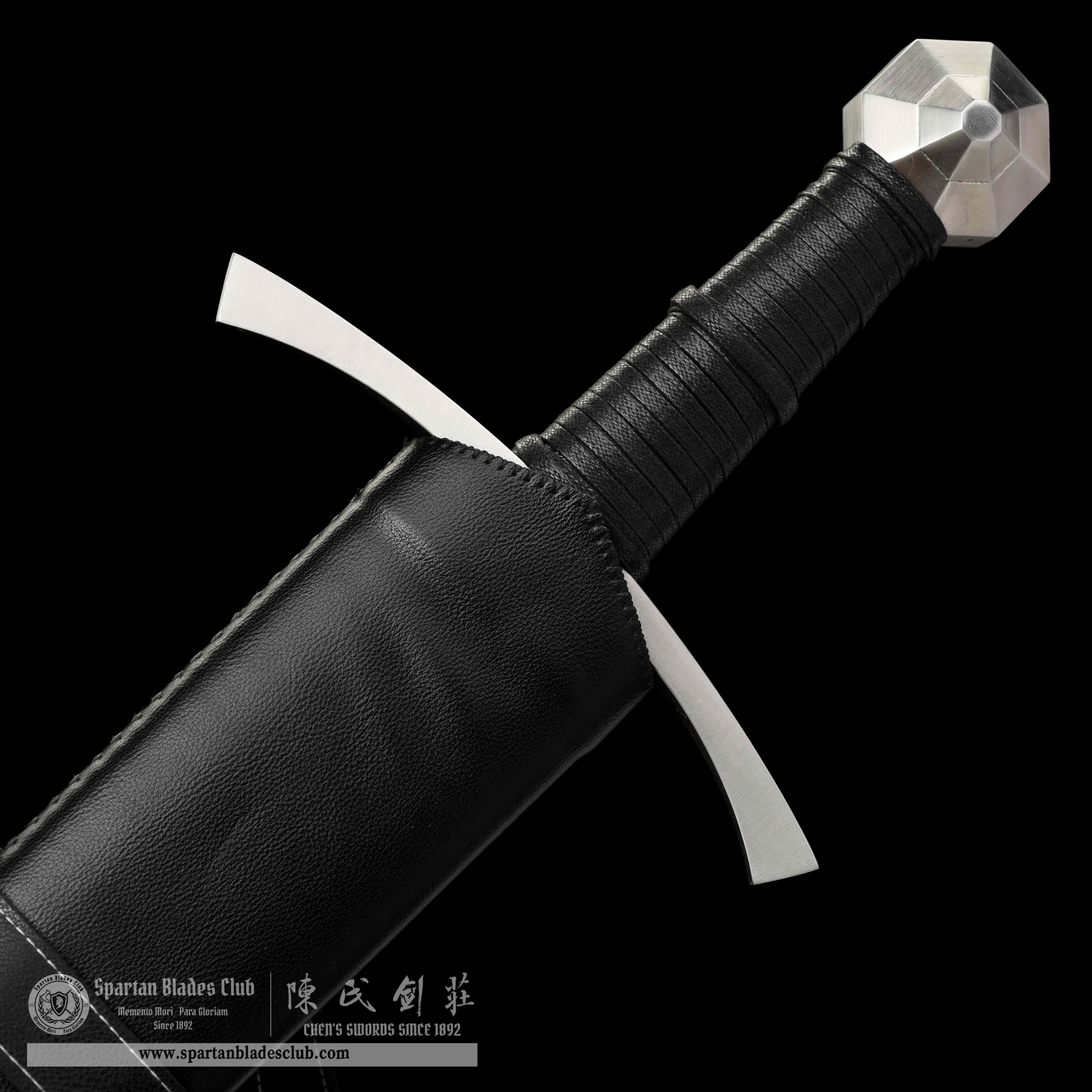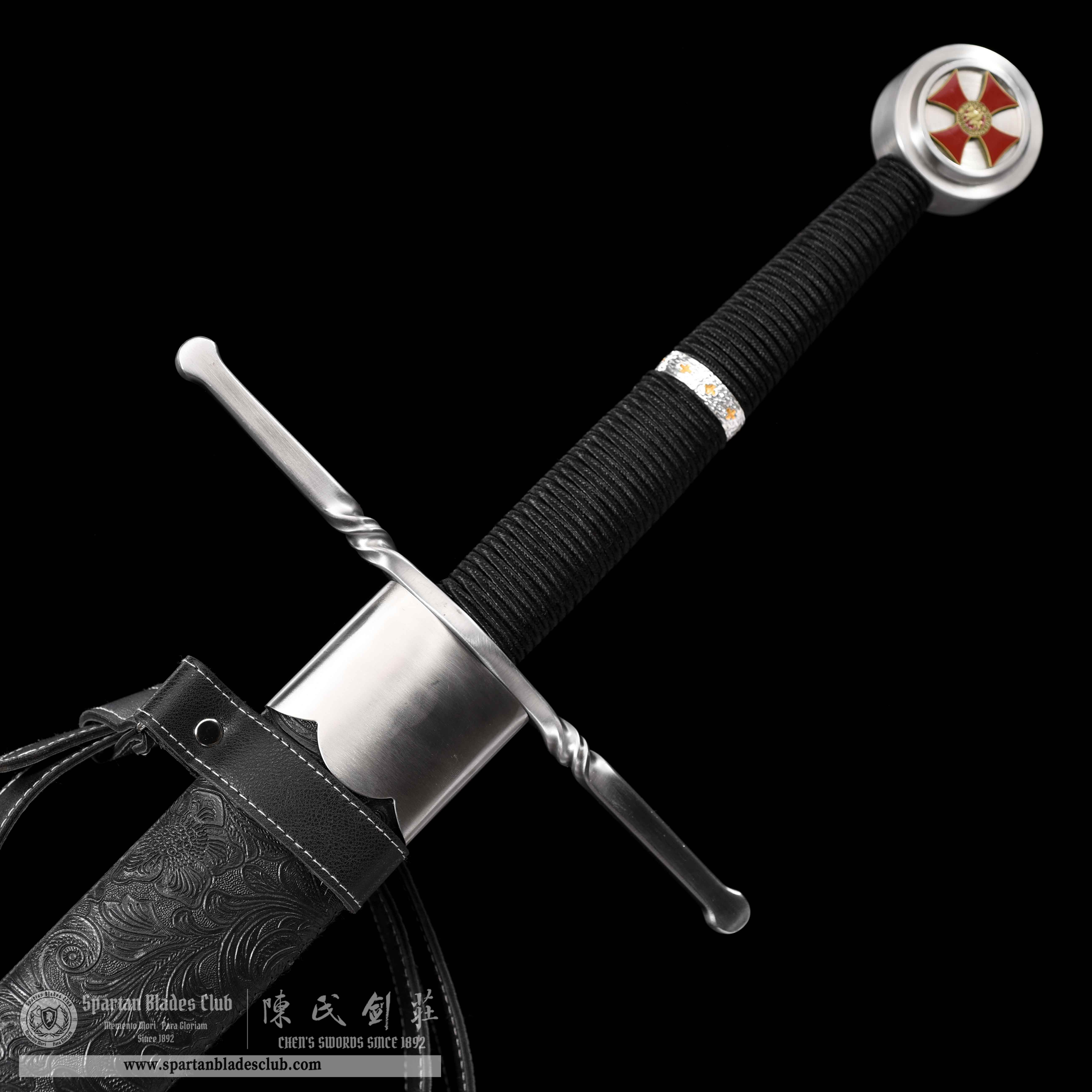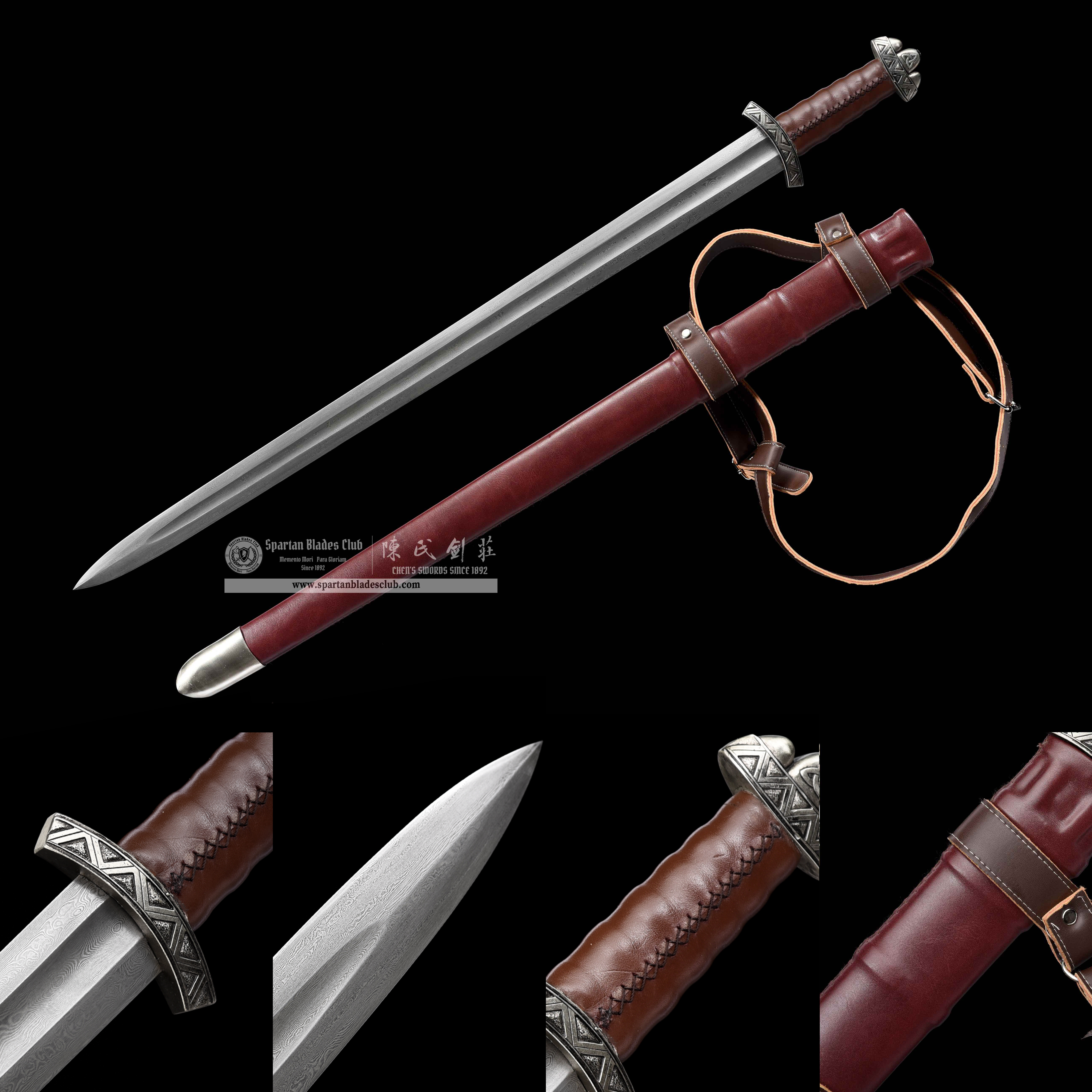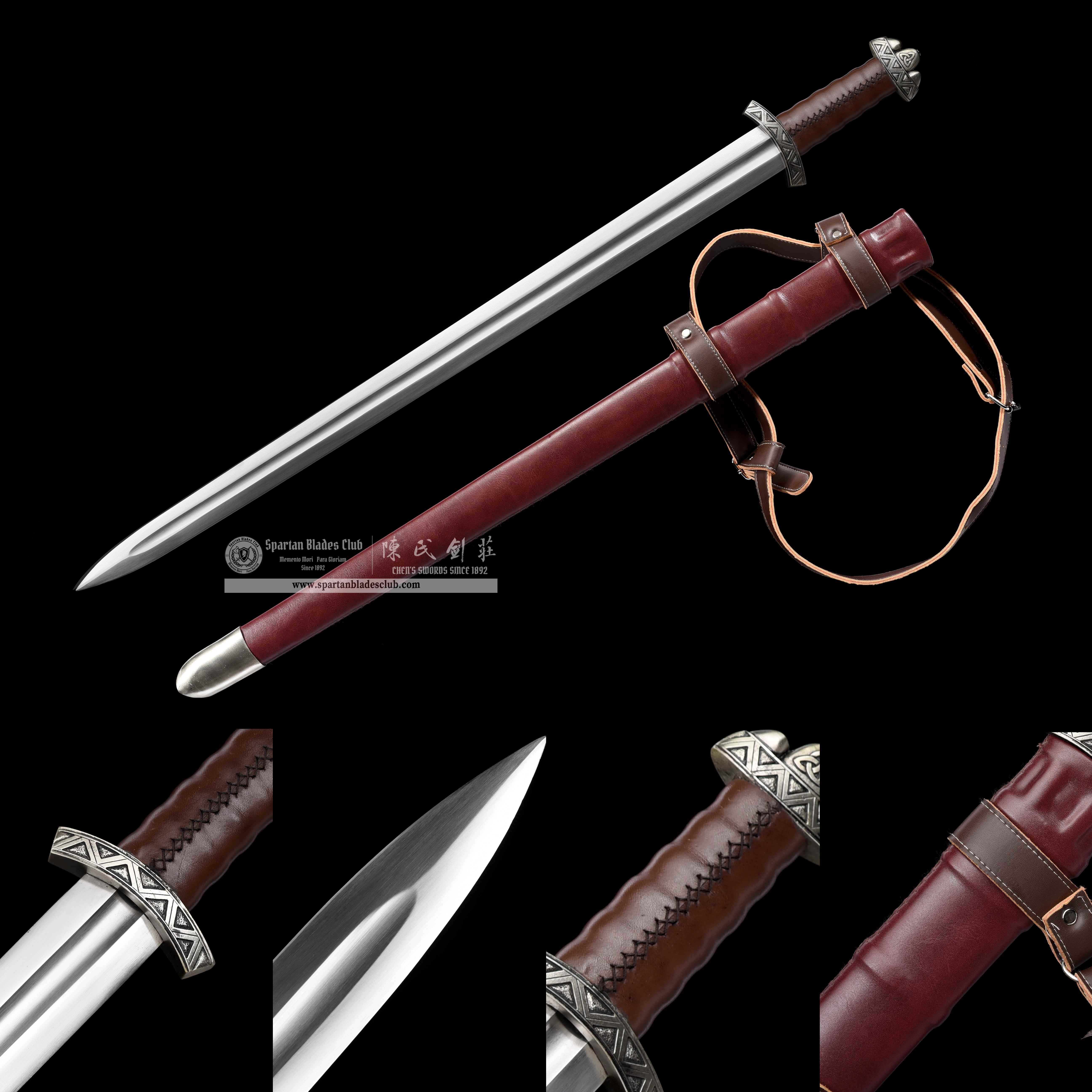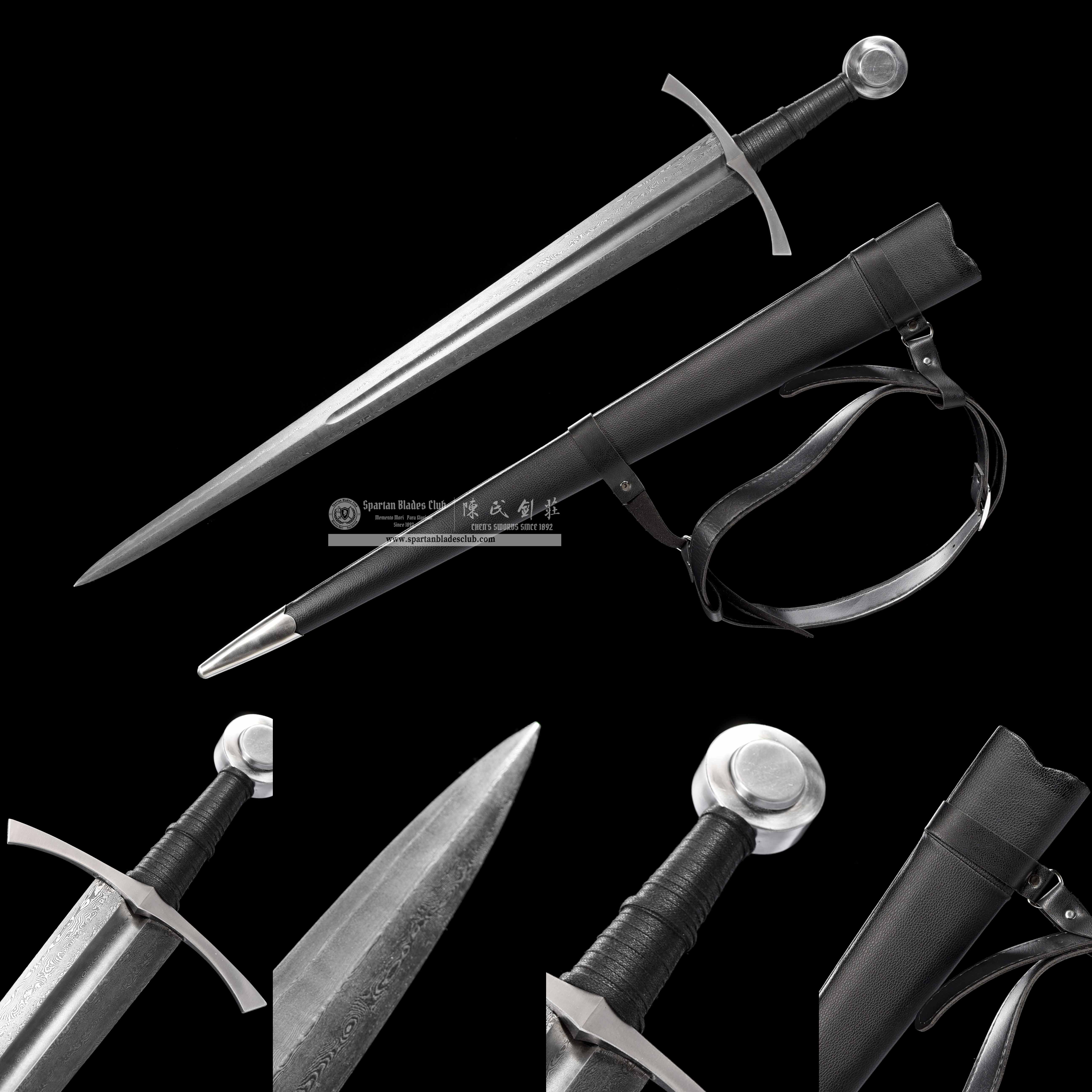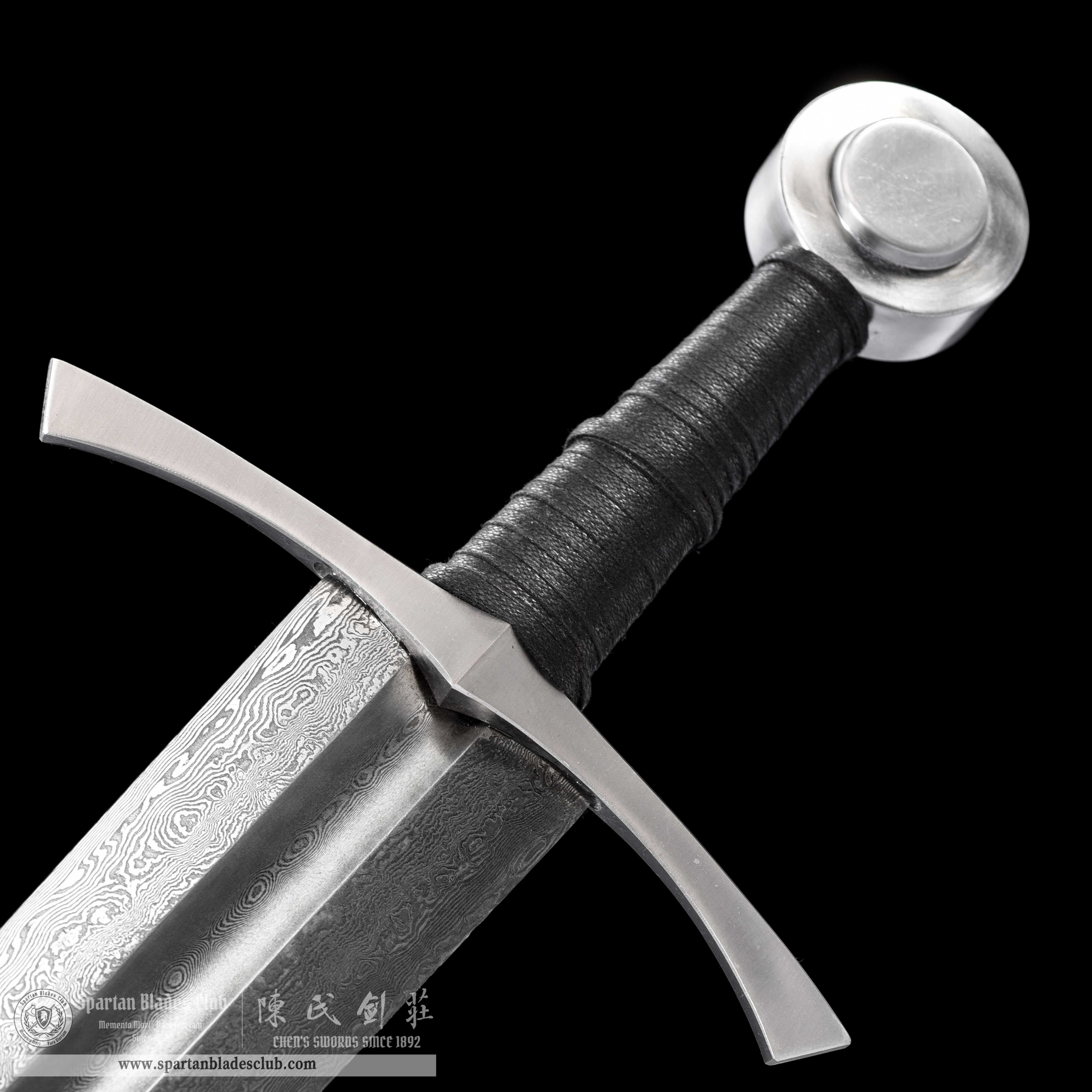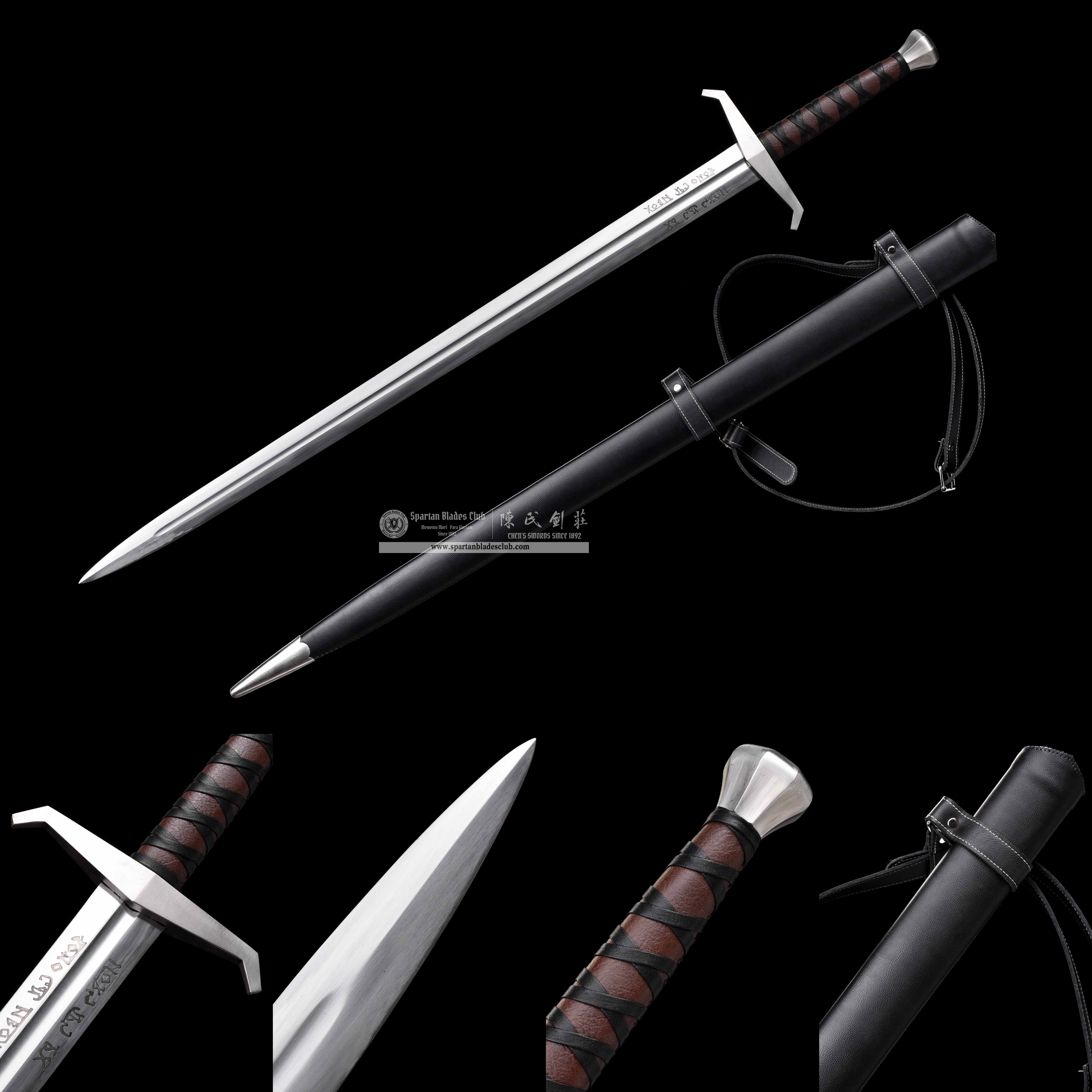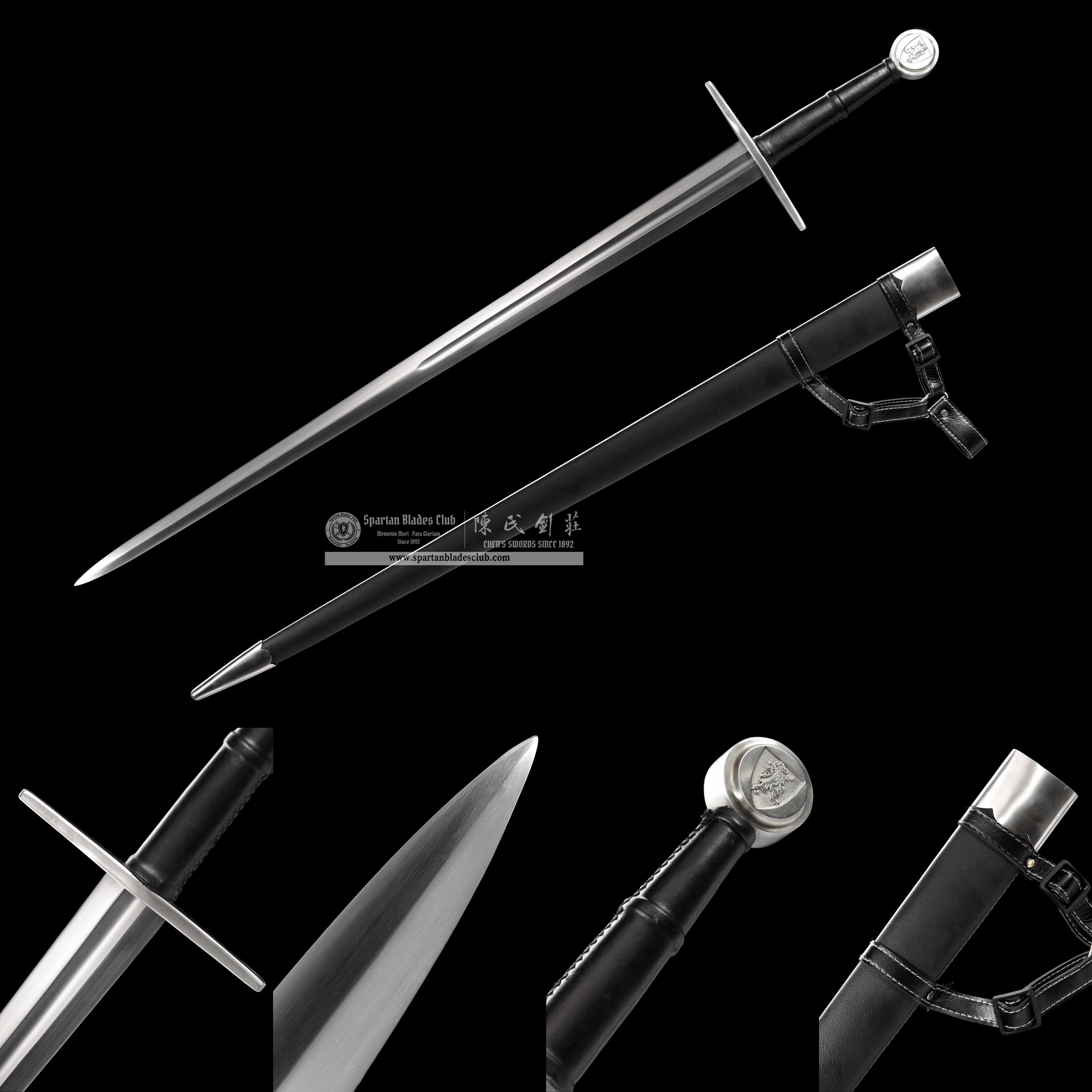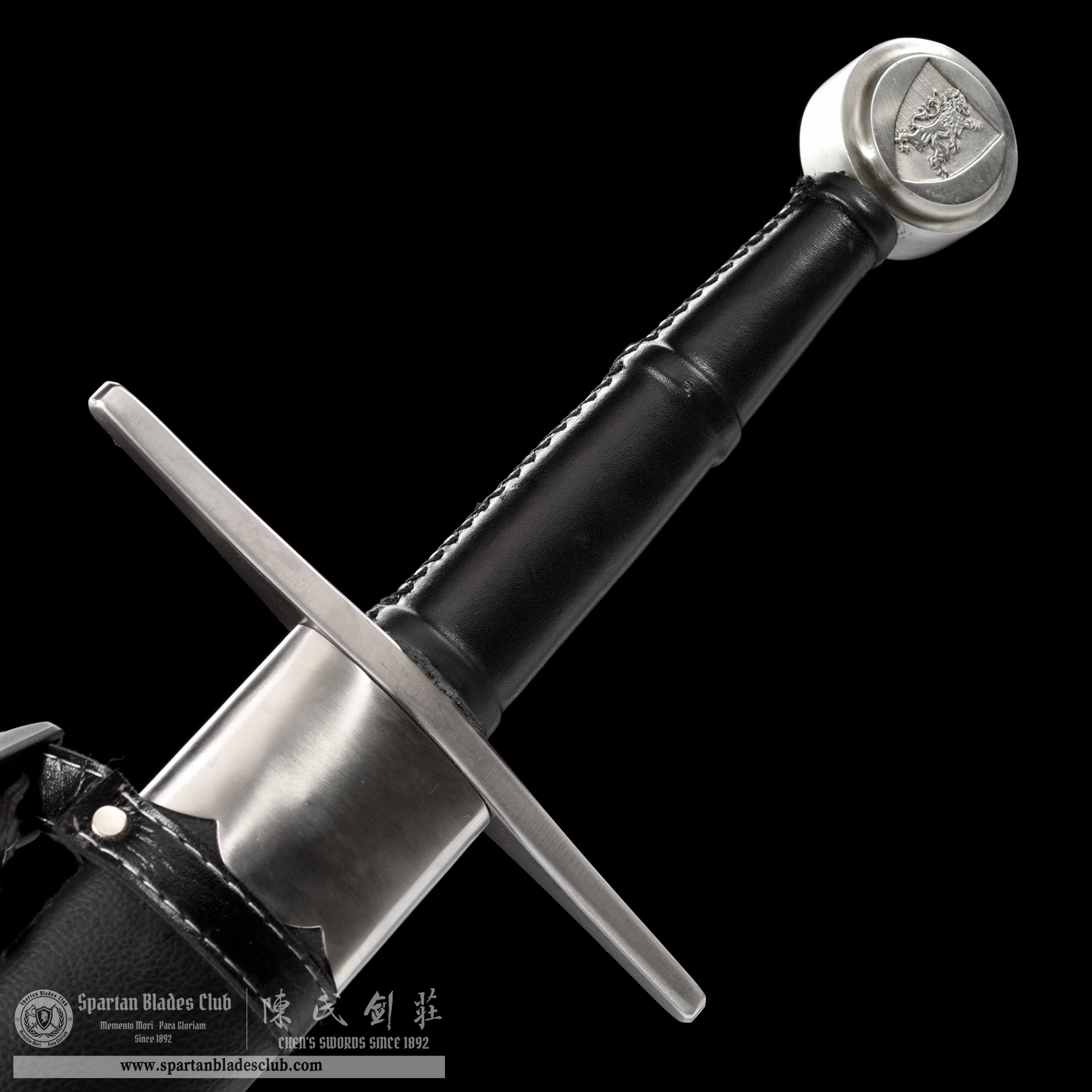European swords evolved dramatically over 2000+ years, reflecting changes in armor, tactics, metallurgy, and societal needs. However, some core features distinguish them from swords in other regions:
-
Blade Geometry & Purpose:
- Predominantly Straight: Unlike iconic curved swords like the Japanese katana or Middle Eastern shamshir, most European swords were straight or nearly straight. This facilitated powerful thrusting and suited fighting against armored opponents, especially as plate armor developed.
- Double-Edged: The vast majority were sharpened on both sides. This maximized versatility, allowing cuts in any direction without turning the wrist significantly and enabling more complex swordplay techniques like the moulinet.
- Evolution of Blades:
- Early Migration/Viking (4th-11th C): Broad blades optimized for cutting (e.g., Viking Ulfberht), relatively short.
- High/Late Medieval (12th-15th C): Adaptations to face increasingly sophisticated plate armor. Blades became longer, narrower, stiffer, and sharply tapered to a fine point for thrusting into gaps (e.g., Type XV-XVIII in Oakeshott typology - the famous "arming sword" and longsword).
- Renaissance/Early Modern (16th-18th C): Long, thin, rigid blades focused almost entirely on thrusting emerged for civilian dueling (the rapier). Concurrently, dedicated military swords developed (side-swords/early broadswords, backswords). The Scottish Highland Basket-hilt Broadsword emphasized powerful cutting.
- Single-Edged Variations: While double-edged dominates, dedicated cavalry swords (like broadswords and later sabres) were often single-edged and sometimes slightly curved for slashing from horseback.
-
Hilt Construction & Evolution (Emphasis on Hand Protection):
- Core Components: Almost universally comprised of a Guard (crossguard/quillons), a Grip (covered in wood, bone, horn, leather, wire, etc.), and a Pommel.
- Pommel: Often substantial, typically round, spherical, brazil-nut, or wheel-shaped. It served multiple vital purposes:
- Counterbalance for the blade, improving handling/maneuverability.
- Anchor point for the tang.
- Weight to secure the hand on the grip during a strike.
- A secondary striking surface ("murdurous stroke").
- Evolution of Guards: This is one of the most distinctive evolutionary paths:
- Simple Crossguards: Short, straight bars perpendicular to the blade (common in Migration/Viking/Early Medieval swords - simple cruciform hilts). Hand protection was minimal.
- Complex Hilts: As fighting techniques evolved (more thrusting, less shield use), hand protection became paramount.
- Medieval Additions: Knuckle-bows start appearing, curved from crossguard towards pommel (seen on some later longsword hilts and early sideswords).
- Renaissance Explosion: Development of the rapier complex hilt: finger rings, side rings, quillons, counterguards, knuckle-bows, and often large protective plates (pas d'âne, shells) creating a "basket". Designed for lethal, precise civilian thrusting with minimal gauntlets.
- True Basket Hilts: Developed primarily in Scotland/Italy/Germany in the 16th-17th Centuries. Metal bars/plates woven into a near-complete enclosure for the hand (e.g., Scottish broadsword). Excellent protection for slashing attacks on battlefield or duel.
- Swept Hilts, Shell Guards: Common on side-swords/cut-and-thrust swords and later smallswords.
-
Balanced Handling:
- European swordsmiths generally strived for good balance. The point of balance (PoB) is usually located just a few inches/centimeters in front of the guard for swords meant for cut and thrust.
- This requires careful tapering of the blade and proportional weight in the pommel.
- Rapiers, optimized purely for thrusting, have a PoB much closer to the guard for faster point manipulation. Cutting swords like later broadswords/sabers have the PoB slightly further out for greater cutting momentum.
-
Metallurgy & Construction:
- Early: Pattern-welding (twisting and forging iron/steel rods) was common in the Migration/Viking era for strength and decoration.
- Medieval: Shift towards monosteel blades (blanks of relatively homogeneous steel) as smelting and forging techniques improved. Crucible steel (wootz/Damascus steel) was known but rarely used compared to the Islamic world or India.
- Heat Treatment: Skilled tempering and quenching were always critical for achieving the right blend of hardness (edge retention) and flexibility (resistance to breaking or bending).
- Full Tang Construction: The blade's tang passes through the entire hilt and is peened over the pommel (or occasionally screwed/nutted). This creates a very strong assembly. Contrasts with some Asian designs using rat-tail tangs held in place by glue/friction.
-
Purpose-Driven Diversity:
- European swords were highly specialized. There wasn't one "European sword," but numerous distinct types:
- Knightly Arming Sword (cut & thrust)
- Longsword/Bastard Sword (cut & thrust, two-handed use)
- Rapier (civilian thrusting dueling)
- Side-sword/Cut & Thrust Sword (military cut & thrust with complex hilt)
- Broadsword (military cutting sword, often with basket hilt)
- Sabre (cavalry slashing sword)
- Smallsword (light, fashionable civilian thrusting sword)
- Executioner's Sword (huge, blunt-ended for decapitation)
Key Distinctions Summarized:
- Double-Edged & Straight: The dominant form factor for centuries.
- Evolving Complex Hilt Systems: A defining characteristic, culminating in rapier and basket-hilt designs offering unparalleled hand protection.
- Pommel Design: Functional counterweight and grip anchor, often prominent.
- Versatility (Later Specialization): Early swords emphasized strong cutting. Against plate armor, thrusting became paramount. This led to specialized forms for thrusting (longsword types, rapier) and cutting (basket-hilt broadsword).
- Straightness for Thrusting: Optimized for defeating armor gaps in a way curved blades generally were not.
While European swords shared the continent with diverse designs (e.g., falchions/messers), these core features describe the archetypal "knightly" and later iconic European forms that differ significantly from major sword families in other cultures.


 USD
USD





